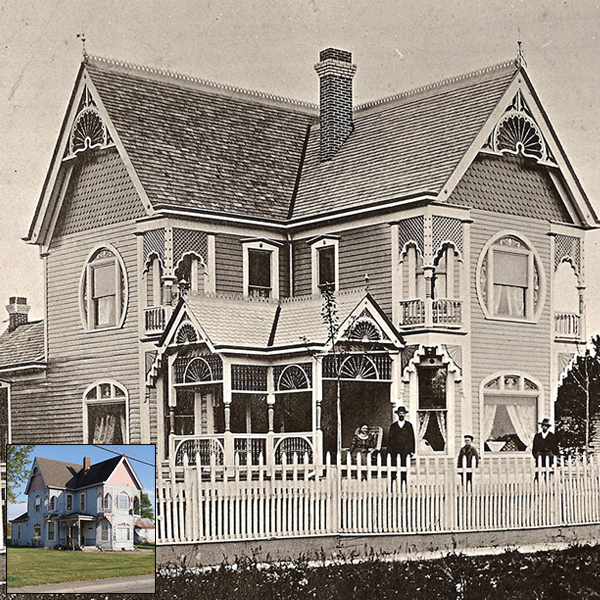Wilkins Homes ( 1 of 4) - George F. Barber Design
Campbellsburg grew around a grist mill established by John T.C. Wilkins in 1859. Additional mills followed, and by the town’s incorporation in 1875, Campbellsburg’s bustling downtown included commercial buildings, three hotels, three churches, a railroad depot, a bank, and a school.
Wilkins built a modest home on Sycamore Street at the entrance to town in 1858. His son, William, later occupied the house and in the late 1890s undertook a major renovation, expanding its footprint and adding embellishments, including horseshoe-shaped stained-glass windows and elaborate spindled porch work – all adapted from pattern books published by George Barber, a Tennessee architect whose designs filled mail-order catalogs in the in the 1890s.
Known for his exuberant Queen Anne-style houses, Barber’s plans regularly featured turrets, balconies, porches, projecting windows, arches, and gingerbread trim.
Wilkins’ other sons – James, John, and Tom – also engaged Barber’s services to construct their own elaborate Queen Anne houses in the town. Today this group of four surviving houses constitutes a rare concentration of Barber homes in a small-town setting. Their existence has attracted the attention of Barber enthusiasts around the country, due, in part, to the eye-catching restoration of the James Wilkins house, which operated for years as a bed and breakfast.
Wilkins built a modest home on Sycamore Street at the entrance to town in 1858. His son, William, later occupied the house and in the late 1890s undertook a major renovation, expanding its footprint and adding embellishments, including horseshoe-shaped stained-glass windows and elaborate spindled porch work – all adapted from pattern books published by George Barber, a Tennessee architect whose designs filled mail-order catalogs in the in the 1890s.
Known for his exuberant Queen Anne-style houses, Barber’s plans regularly featured turrets, balconies, porches, projecting windows, arches, and gingerbread trim.
Wilkins’ other sons – James, John, and Tom – also engaged Barber’s services to construct their own elaborate Queen Anne houses in the town. Today this group of four surviving houses constitutes a rare concentration of Barber homes in a small-town setting. Their existence has attracted the attention of Barber enthusiasts around the country, due, in part, to the eye-catching restoration of the James Wilkins house, which operated for years as a bed and breakfast.
Listing Details
Views
3,207
Map



